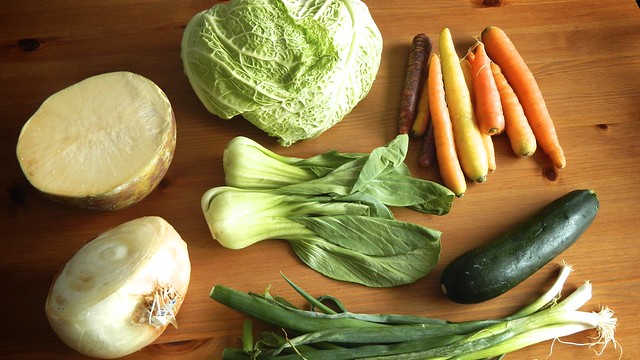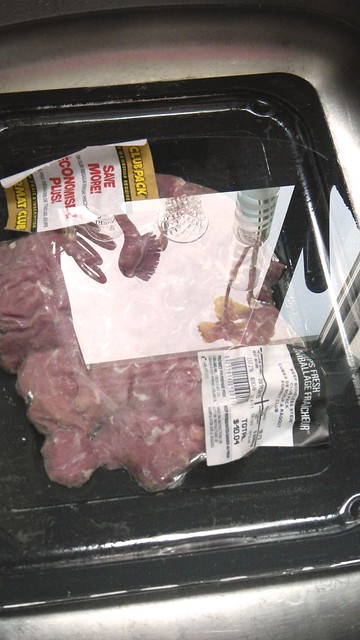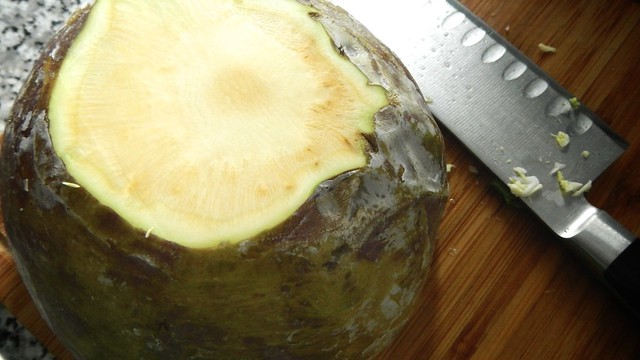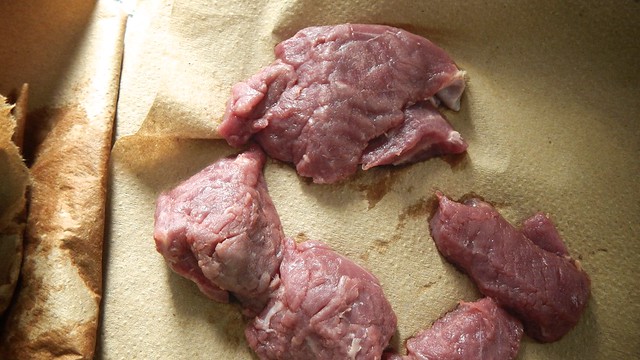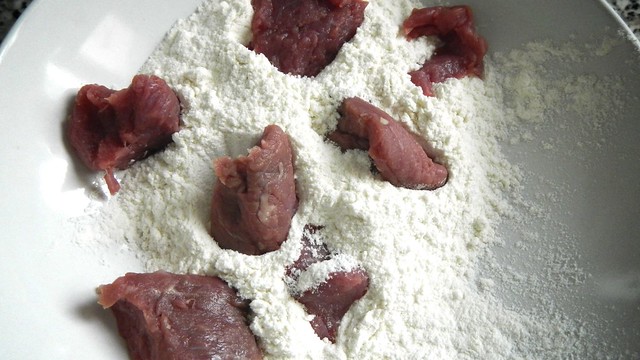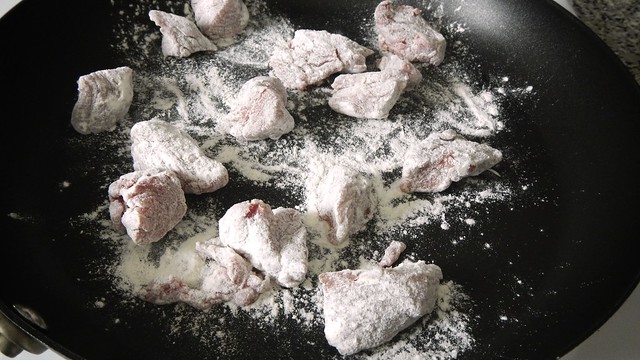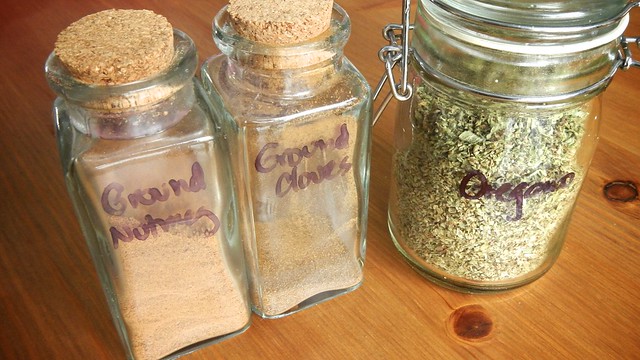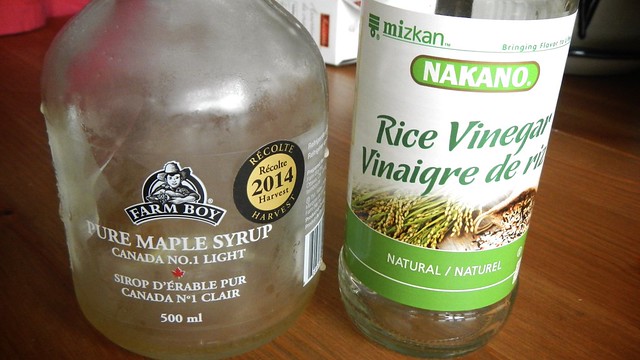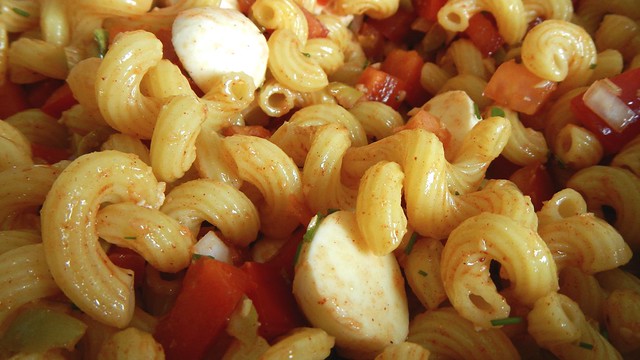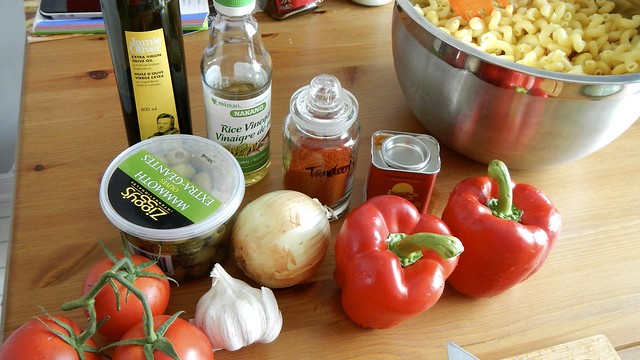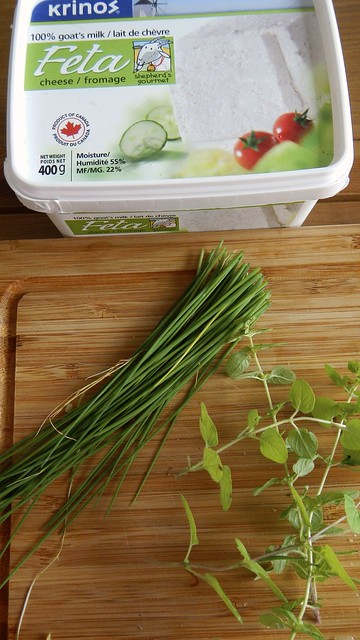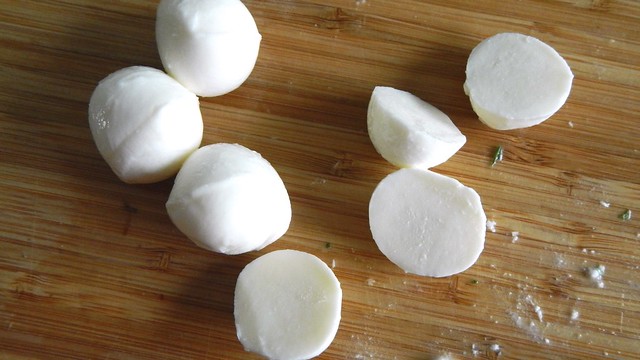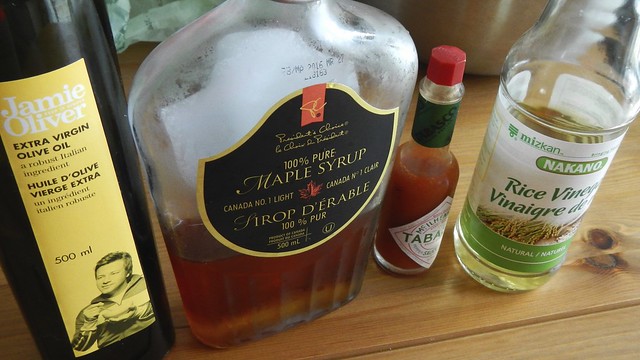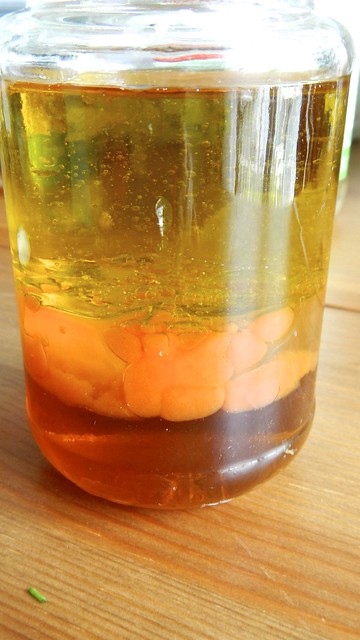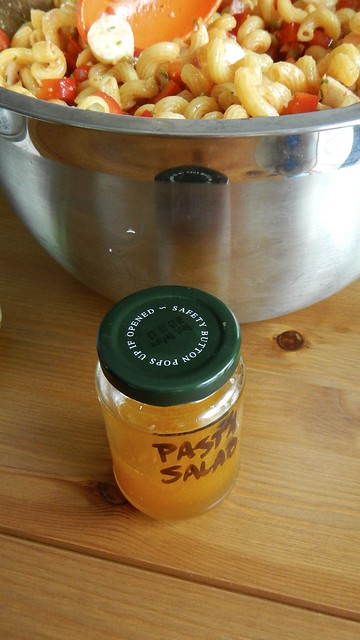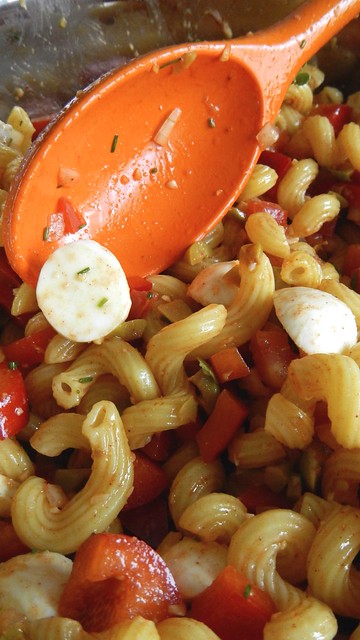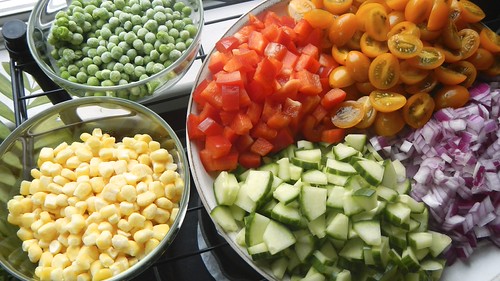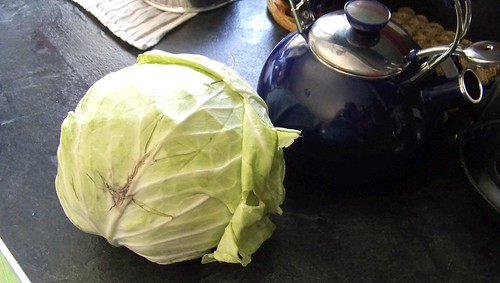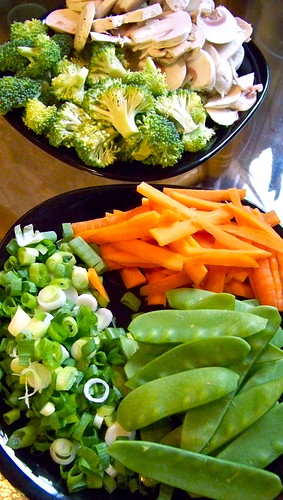Hooray! It’s our 200th post!

I am fortunate to have three best friends (and yes, the superlative applies to all of them). You’ve already met Cait and Chel, and now I would like to introduce you to Doodle (she’s not that fond of the nickname but she used to call me Poo so she’ll just have to suffer).
When she was home from Chicago for Christmas, she got her mother, who is Japanese, to teach her how to make gyoza, a crispy-fried dumpling, basically the Japanese version of a pot sticker. With her new-found knowledge she came over to cook dinner for my parents and the Pie and myself. And we were all so very glad she did.
For a very short person and a very tall person, Doodle and the Pie make a good cooking team.
To accompany the gyoza, Doodle decided on a simple green salad and miso soup, with rice on the side.
For the soup:
I’m sure you remember my earlier attempt at miso soup with an Atlantic flavour. I can assure you that this is the real deal.
Start a pot of water boiling, with as much liquid as you will need to feed all your hungry mouths.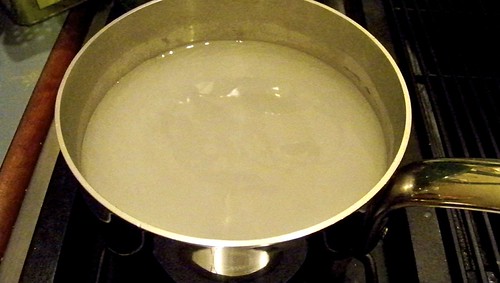
Grab yourself some miso. This particular miso was made BY HAND by Doodle’s mother, so it was extra good.
Add the miso bit by bit to the boiling water, until you have achieved the desired consistency and taste. 
An important ingredient is dashi, a sort of fish powder. Sorry my picture here is blurry. Add a couple of shakes of that.
And some seaweed. It’s amazing, considering what’s in this particular soup, that the Pie drank his all up in a jiffy.
Cube some tofu and add that in as well.
Doodle informs me that you can keep whatever tofu you don’t use right away in your refrigerator, as long as it’s submerged in clean water, which you will need to replace every day. The more you know.
Keep adding things until it tastes good to you.
 When you are ready to serve, pour your soup into bowls that will fit easily into your hand (miso soup is a good drinking soup) and garnish with chopped green onion.
When you are ready to serve, pour your soup into bowls that will fit easily into your hand (miso soup is a good drinking soup) and garnish with chopped green onion.
For the salad:
On Doodle’s instructions I gathered equal amounts of broccoli, asparagus, and green beans, and chopped them into pieces manageable by chopstick.
Gently steam your vegetables in a pot of simmering water.
Drain and rinse the vegetables in cold water.
Dress with a mixture of soy sauce (Doodle’s mom prefers the sushi soy sauce for its sweetness), rice vinegar, sesame oil, and garlic powder, to taste.
For the dumplings:
This is Doodle chopping up Asian chives. I’m sure any kind of chive is good.
She then added them to about half a red onion, chopped finely, in a bowl.
Add to that about a cup each of ground pork and lean ground beef.
Maybe a spoonful each of minced garlic and minced ginger.
Doodle then chopped up some green cabbage. Then she mulched the cabbage in a food processor.
Adding the cabbage to the meat and onions, she mixed it well with her hands.
Now comes the fun part.
On your workspace, place the bowl with the meat mixture and a spoon for scooping it up, a plate for the finished dumplings, and a small bowl of warm water.
For these dumplings you need the round dumpling wrappers. Doodle tells me that the square ones don’t work as well, and, also, that the dumplings can be frozen and used later, though they are slightly more sticky when thawed.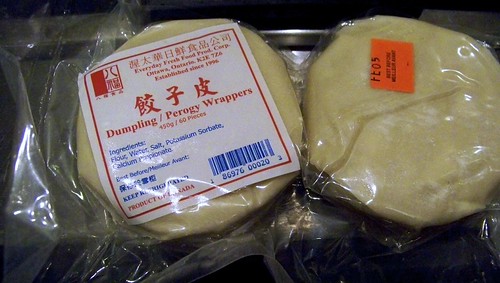
Place a wrapper in the palm of your hand. 
Take a spoonful of meat mixture and place it in the centre of the wrapper.
Dip a finger from your other hand in the water and use it to draw a line around the edge of half the wrapper.
At the edge of the wrapper, where the wet line meets the dry wrapper, pinch the two sides together, just at the edge. Then pull the rest of the wet side of the wrapper over slightly and pinch it onto the dry side, making a pleat. 
Continue until you reach the end, so that one side of your dumpling edge is smooth and the other is pleated. This will make sure that the dumplings stay upright when they are cooked. Make sure to seal the edges well, using more water if you have to, in order to ensure a good seal.
Keep doing this until you either run out of dumpling wrappers or filling material. You can see that expert Doodle has created a plate of perfect dumplings.
This is the plate that the Pie and I made. Not quite so perfect. Of course after they were cooked you couldn’t tell the work of us newbs from that of the professional so it’s all good.
Now take a large non-stick frying pan with a lid that fits. A wok won’t work because you need the bottom to be flat.
Put a few teaspoons of oil in the pan and heat it to medium-high. Place your gyoza into the pan so they are all sitting upright and let them sizzle for a few minutes.
Fill a cup with water and add a teaspoon or two of flour. Mix it well.
Pour the flour water into the bottom of the pan and cover the pan with the lid.

Let the dumplings cook like that until all the water is gone and the flour has formed a sort of crispy net on the bottom of the pan. 
Use chopsticks or a spatula to loosen the dumplings from the pan.
Place a plate on top of the dumplings.
Flip the pan so all the dumplings end up on the plate. Some may still end up in the pan. Some may end up on your floor. It’s anyone’s guess.
See how they’re all lovely and crispy brown?
Mix up some soy sauce and rice vinegar.
Pour it into a dipping bowl for your dumplings and serve everything with some rice.
Enjoy it thoroughly.
There was nothing left of this lovely repast, as you can see. I can’t wait to do it again!


